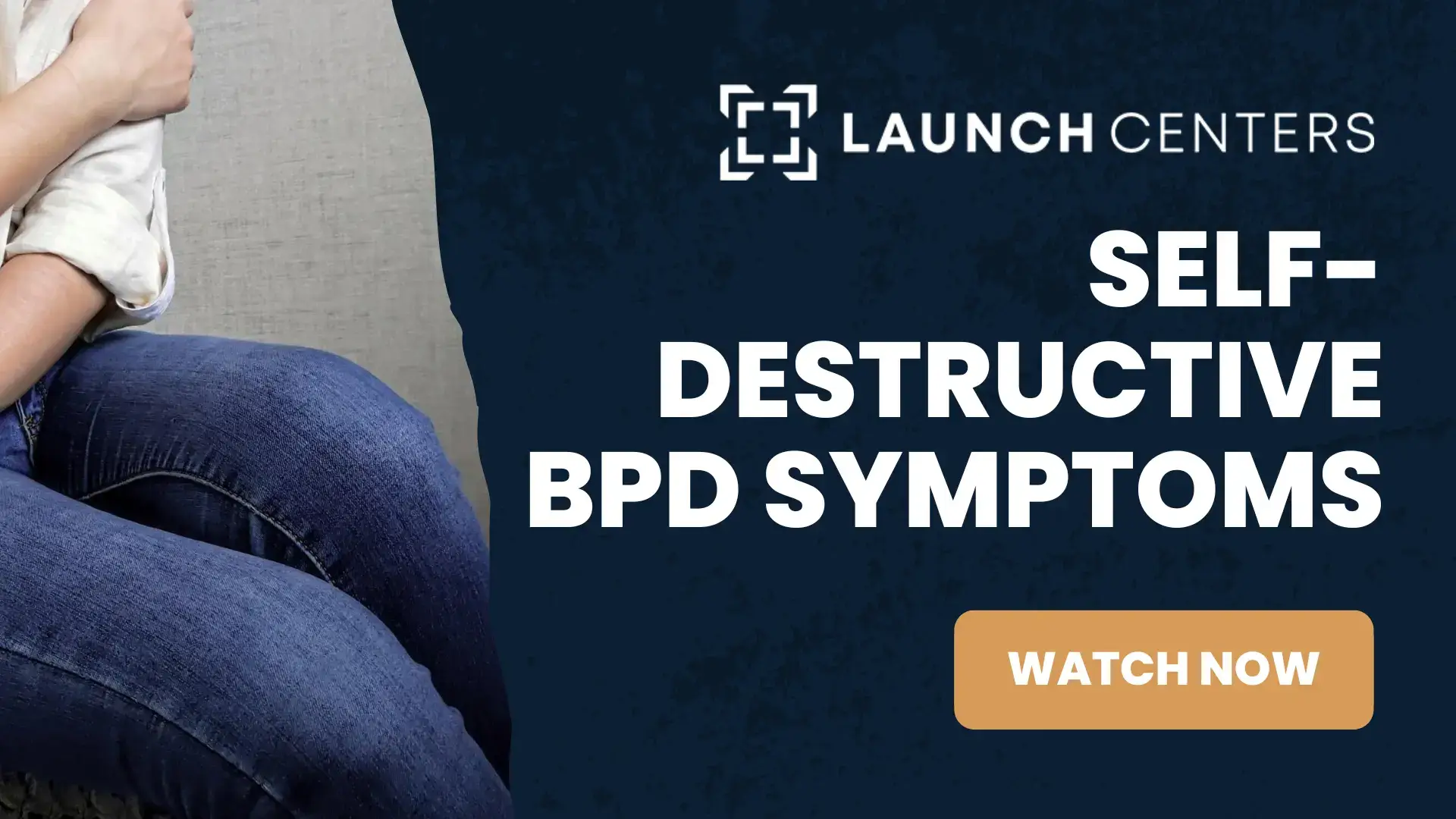If you suspect you or someone you love may have a self-destructive borderline personality disorder, you likely have many questions. This diagnosis may seem scary at first, but understanding it is the first step to seeking effective treatment. Learn more about this mental illness and how to get help for it.
What is Self-Destructive Borderline Personality Disorder?
Borderline personality disorder, often called BPD, is a diagnosable mental illness classified as a personality disorder. Hallmark behaviors include acting impulsively, difficulty engaging in stable relationships, and a fear of abandonment. Those struggling with BPD find it difficult to regulate their emotions, especially after they feel triggered by something.
Many people who deal with self-destructive borderline personality disorder abuse drugs or alcohol. They may do so in an attempt to self-medicate the difficult and cumbersome side effects of their personality disorder. They may also discount the potential danger of substance abuse as part of their tendency towards careless, thrill-seeking behavior.
Self-harming also commonly occurs with this mental illness. This includes causing self-injurious behaviors such as cutting, burning, excessive scratching, hitting, or other physical acts that cause pain and wounds. A person with self-destructive BPD may also deal with suicidal feelings, including acting on them.
The Difference Between Self-Destructive BPD and BPD
While some people receive a general diagnosis of borderline personality disorder, others find that they deal with a specific subtype. Four different subtypes exist:
- Self-destructive BPD
- Impulsive BPD
- Discouraged BPD
- Petulant BPD
Individuals who have a self-destructive borderline personality disorder share similar symptoms to those with a general diagnosis of BPD. In addition, they deal with a large amount of self-hatred. They often feel increased amounts of energy, don’t get enough sleep, and experience feelings of euphoria. These individuals tend to engage in risky behaviors, looking for an adrenaline rush. These symptoms may lead to a clinician suspecting the person actually is experiencing a manic episode as part of bipolar disorder and not immediately understanding their real diagnosis.
Signs and Symptoms of Self-Destructive Personality Disorder
A person with self-destructive borderline personality disorder exhibits certain signs and symptoms that may vary. Common ones include:
- Self-harm
- Feeling depressed
- Moody and unstable emotions
- Self-hatred
- Feelings of hopelessness
- Acting out to get attention and comfort from others
- Reckless behavior
- Sabotaging their own happiness
- Difficulty completing goals
- Trouble establishing their own identities
- Suicidal thoughts and behavior
- Abusing alcohol or drugs
What Causes Self-Destructive Borderline Personality Disorder?
While there isn’t just one cause of BPD, there are a few common things that may contribute to a person developing it. These include genetics, particularly if other family members deal with it. The way the person’s brain functions – or malfunctions – can influence the development of the illness. A person who has experienced traumatic events or other impactful environmental circumstances also may be at a higher risk of developing BPD.
When seeking out a diagnosis for BPD, looking for a qualified medical clinician proves important. A physician or trained therapist can provide an analysis of an individual and determine if they suffer from BPD and if it qualifies as the self-destructive type. From there, they can design a treatment plan to help the person manage their symptoms and feel more in control.
Treating Self-Destructive BPD
A person dealing with a self-destructive borderline personality disorder may not recognize their need for help, even when those around them see it. They might also feel they need help but don’t know what assistance is available. This challenging mental illness can be treated through a variety of options, including both residential and outpatient settings.
Individual therapy provides an effective way to help someone with self-destructive BPD learn to recognize their triggers. They develop healthy coping skills that help them challenge tendencies to assume only negative outcomes are possible for them. Two particularly helpful types of therapy for self-destructive BPD include dialectical behavior therapy (DBT) and cognitive-behavioral therapy. Individuals who participate in regular sessions of these types of therapy often enjoy great progress in changing their mindsets and behaviors.
Many people with self-destructive borderline personality disorder, particularly young adults, have trouble focusing on career and school goals. They often lack confidence in their abilities, or they self-sabotage their own plans. When these individuals work with professionals to develop the ability to set and achieve goals, they can make real progress. Education and career counselors work with them to determine plans they can be excited about and help support them in avoiding self-destruction on the way to achieving them.
Medication can also provide a real impact when it comes to treating mental illness. A medical professional can provide a full assessment of someone with self-destructive BPD and determine if any other mental health challenges co-exist with it. From there, a plan for any needed medications can be established. The clinician will then monitor the person for progress and any side effects, adjusting the medication and dosage as needed.
Help for Self-Destructive Borderline Personality Disorder in Los Angeles, CA
Self-destructive borderline personality disorder doesn’t have to mean you can’t have a fulfilling life. Our expert team offers ways to address this disease and help you feel more in control. We also treat any co-existing addictions to drugs or alcohol. Call Launch Centers in Los Angeles, CA, or visit our admissions page today and let us tell you about the options we provide to help you manage your symptoms for better mental health.






